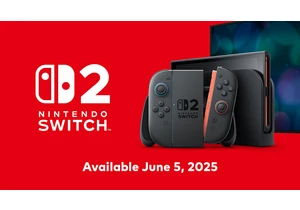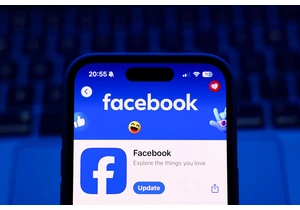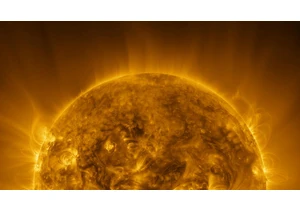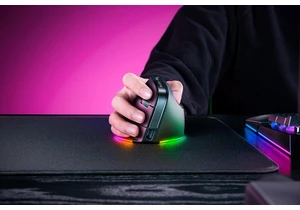Apple’s iPads get all the headlines, and with good reason: They’ve long been considered the best tablets for most people. But none of them come cheap. For folks on a tighter budget, I’ve spent the last few weeks testing a couple of 8-inch slates on the dirt-cheap end of the price spectrum: the $100 (but frequently discounted) Amazon Fire HD 8 and the $79 Walmart Onn 8”. They aren’t the only tablets available in this price range, but they’re pushed directly by the world’s two largest retailers, so there’s a good chance casual shoppers may buy them without knowing exactly what they’re getting. We pitted the two slates head-to-head not only to figure out which one is better, but also to diagnose the state of ultra-budget tablets as a whole.
Balancing cheapness and utility
You’ll never get truly “premium” hardware when you shop in this price range, but the Onn makes a nicer first impression than Amazon’s Fire tab. Squint hard enough and it sort of resembles a budget iPad mini, with a chilly aluminum back, squared-off edges and firm side buttons. Most people I handed it to over the course of this review were immediately surprised at how decent it felt for something so cheap.
The Fire HD 8 wears its price more clearly. It’s mostly made from a hard textured plastic, with slightly thicker yet more rounded sides, thicker bezels and flimsier buttons. The front facing camera and dual speakers sit on the long edge, so it’s mainly designed to be held horizontally for streaming video or playing games. The Onn has a more traditional setup, with its selfie camera at the top and two speakers firing out the bottom edge, so it’s not as accommodating for media consumption or video calls.
Despite the cheaper-feeling materials, I find the Fire HD 8 easier to hold for longer stretches. The gently curved sides don’t dig into your palms as much as the Onn’s flat edges, and while the larger bezels aren’t pretty, they give your thumbs a more natural place to sit. The Onn in particular can be prone to accidental inputs, something its thinner bezels exacerbate. That said, the Onn isn’t uncomfortable, it’s just more generic. In fact, it’s actually a half-inch narrower than Amazon’s tablet. With either device, you’re getting a tablet that’s just under 0.8 pounds — lightweight, highly portable and easy to hold with one hand.
The different perils of cheap tablet displays
You won’t write home about either tablet’s 8-inch IPS LCD display, but the Onn’s panel is the surprisingly clear winner when you put the two side-by-side. Colors are noticeably less muted, black tones are deeper and the whole thing can get a bit brighter at its peak. White tones are too blue for me to call this screen accurate, but the Fire HD 8 tilts even farther in the other direction — it runs much warmer, which layers everything with an orange-ish hue. This makes it easier on the eyes at night, but it dulls colors, washes out black tones and generally looks dimmer by comparison.
Beyond the tuning, both screens have similar drawbacks. Both are saddled with a low 1,280 x 800 resolution, which is sharp enough for displays this small but still makes text and images fuzzier than they’d appear on an iPad or pricier Android slate. Both have a basic 60Hz refresh rate. Neither is fully laminated, so there’s an air gap between the LCD and the display cover that makes scrolling feel less natural. This is especially noticeable on the Fire HD 8. (Apple’s base iPad has this same issue, but it’s an issue nonetheless.) Amazon’s tablet is also a major smudge and fingerprint magnet, plus it’s more difficult to read outdoors. The Onn doesn’t exactly excel in these areas either, but it’s better.
And yet, much of the Onn’s advantage is negated by its lack of Widevine L1 support. Android Authority has a good explainer, but to simplify, Widevine is the Google-owned DRM platform used by many of the most popular video streaming services, including Netflix, Disney+, Amazon Prime Video, Hulu, Paramount+ and Max. It has two security levels Android devices can support: L1 (the highest) or L3 (the lowest). If a device is only L3-compliant, like the Onn, video from these services is capped at a 480p resolution. Sure enough, shows and movies from those services are visibly less sharp on the Onn than they are on the Fire HD 8, which supports Widevine L1 and has no issues playing in 720p.
This sucks. Netflix, Disney+ and the like are the apps many people buy a tablet to use, and while the Onn’s display is generally more vibrant, the difference isn’t nearly large enough to overcome video streams that look like they were ripped in 2010. A dimmer and overly warm image is still preferred if it’s the only one that supports HD across the board. Google doesn’t charge a license fee to implement its DRM tech, so there’s little excuse for Walmart — a $700 billion company — to ship a tablet that isn’t fully certified, even if it’s a cheapo model. Yet the Onn isn’t the only cheap Android tablet without full Widevine compliance. Consider it another way those on a tighter budget are let down by corporate laziness.
The other expected sacrifices
There are several other hardware benefits you give up when you dive into the bargain bin, most of which are annoying but not terribly surprising. The cameras on both tablets are horrid, for one, blurring details and washing out colors even in full daylight. Neither tablet has a fingerprint reader for unlocking the device faster. Nor do they have formal water-resistance ratings, so you’ll want to be careful using either around the sink or tub.
Both devices are equipped with a basic USB-C 2.0 port, and neither supports true fast charging. The Fire HD 8 can top up slightly quicker, as it supports up to a 15W charge compared to the Onn’s 10W, but even then Amazon only includes a 5W adapter in the box.
The Fire HD 8 also has the edge when it comes to audio. It’s far from impressive: It can’t get very loud and it struggles to cleanly separate the different parts of tracks. But it’s decidedly fuller, warmer and more balanced than Walmart’s shrill speakers, which make vocalists sound like they’re shouting through a tin can. The Fire HD 8 can at least imply some level of bass too, whereas the Onn is pretty much devoid of it. The Onn also lacks a headphone jack, so you’re out of luck if you still like to keep a wired pair handy (like me).
Fast enough — barely
Both the Onn and the Fire HD 8 are about as cheap as Android tablets get, and their performance follows suit. On paper, the former wins by a hair: Both come with 3GB of RAM, but Walmart’s slate runs on a 2 GHz eight-core chip (Mediatek MT8786), while Amazon’s uses a 2 GHz six-core processor (MediaTek MT8169). Along those lines, the Onn’s single- and multi-core performance was better than that of the Fire HD 8 in the Geekbench 5 benchmark (331 to 194 and 1317 to 950, respectively).
In practice, however, there isn’t much difference. Both processors are as entry-level as it gets in 2025, and 3GB of RAM is the absolute minimum for passable performance. Geekbench 5 is an older version of that particular benchmark, but we had to use it because the latest Geekbench 6 straight-up doesn’t work on devices with less than 4GB of memory.
With either tablet, you’re looking at light media consumption and little more. Apps, videos and ebooks load quickly enough to not completely annoy you. Web browsing is adequate so long as you don’t open more than a few tabs at a time. Casual card and match-three games play well enough, and you can run at least some more involved games like Diablo Immortal and PUBG Mobile if you knock them down to their lowest graphical settings. Streaming games over services like Xbox Cloud Gaming and Amazon Luna works about as well as it does on any other device. (But we did notice that some games were capped at a lower resolution on Walmart’s tablet than they were on the Fire HD 8.) These are the kind of tasks ultra-cheap tablets are designed for, so this is what they can do.
Even still, there will be hitches along the way. Pulling up the app drawer on the Onn sometimes took a second more than it should. There’s a slight but noticeable lag when you scroll down the home screen on the Fire HD 8. Multitasking or doing any serious work on either device is out of the question. Many graphically demanding mobile games won’t start at all. Some sites take frustratingly long to load, because the modern web simply isn’t designed for affordable devices like these — there are too many resource-hungry ads, images and auto-playing videos for them to truly keep up.
If you want to keep score, the Fire HD 8 usually took just over 25 seconds to boot up. That’s slow, but still eight to 10 seconds faster than Walmart’s tablet on average. (For reference, an iPad Air M2 I had on hand took about 12 seconds to boot up.) Load times for individual apps were more of a toss-up: Some loaded a second or two faster on the Fire HD 8, some on the Onn, while others were effectively even. Ultimately, both let you do the basics without overwhelming trouble, but they always feel like they’re skirting the edge. I wouldn’t expect either to hold up well two or three years from now.
One benefit of having a lower-spec device is that it won’t chew through battery life. Walmart says the Onn can last up to 15 hours, while Amazon rates the Fire HD 8 at up to 13 hours. Those are generous estimates, but both devices should last more than 10 or 11 hours on a charge with typical mixed use. The Onn survives a pinch longer between the two, but the difference is minimal. Both have enough juice to get you through a long flight.
Both tablets also come with a paltry 32GB of storage, and the portion of that space that’s actually usable out of the box is even smaller: 25GB for the Fire HD 8 and just 18GB for the Onn. This means you likely won’t be able to install more than a few games to either device at any given time. Thankfully, you can add up to 1TB of room with a microSD card — a feature that is not available on any iPad — and that will be a must if you want to download a bunch of movies or songs to play offline.
One caveat to all of this is that Amazon sells an upgraded version of the Fire HD 8 with 4GB of RAM and 64GB of storage for $129. That puts it over the $100 threshold we set for this exercise, but the extra gig of memory should make everything run slightly smoother.
Good Android, bad Android
The biggest distinction between the Onn and the Fire HD 8 comes down to their radically different takes on Android. With the former, it’s essentially a stock version of the OS. It’s Android 14, so it’s about to be two major updates behind, but the only app Walmart pre-installs is its own (natch) and even that is removable. Otherwise, all of Google’s core services are right there, swiping left on the home screen takes you to the Discover news feed and you can download just about any other app from the Play Store. If you’ve used an Android device in recent memory, you should be able to get around without a sweat.
The tablet defaults to the Google Assistant out of the box, but you can download the company’s Gemini AI app and make that your default assistant in settings. While the chatbot isn’t as tightly integrated here as it is on Pixel devices, you can still use it to answer queries, summarize emails and webpages, generate text, create (terrible) images and so on. The Gemini 2.0 Flash model picks up voices well and runs without any serious lag to boot.
Login to add comment







